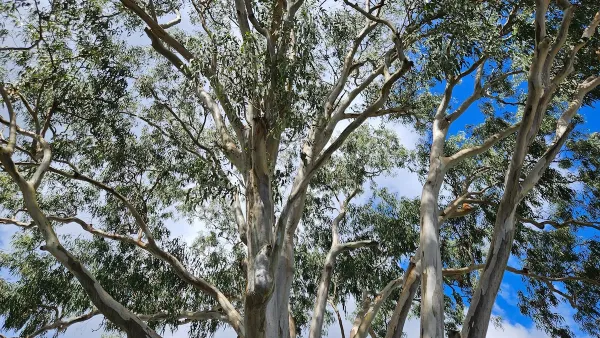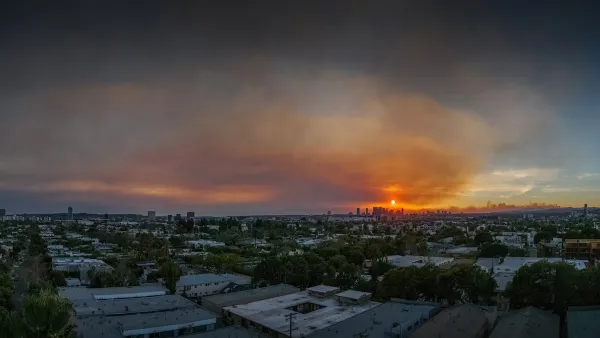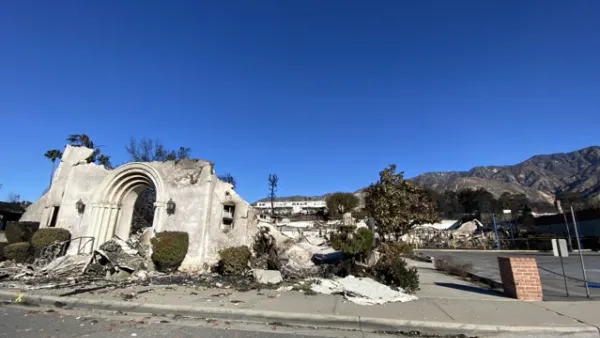L.A. must balance fire resilience with ecological preservation by gradually replacing flammable non-native plants like eucalyptus and palm trees with native and fire-resistant species while rethinking urban landscapes and land management practices.

Southern California's fire-prone environment raises questions about the role of flammable non-native plants, like eucalyptus and palm trees, in spreading wildfires. While these trees are iconic symbols of Los Angeles, they are also highly combustible and can exacerbate fire risks, especially when poorly maintained. Experts suggest a gradual transition toward native and less flammable species, such as coast live oaks and California lilacs, to create fire-resilient landscapes. However, even native plants are not entirely fireproof, as many naturally burn and regenerate, requiring careful planning to balance fire safety with ecological preservation.
This editorial emphasizes the importance of thoughtful vegetation management and land use planning to minimize fire hazards. Native plants, besides being less flammable in some cases, provide critical habitat for wildlife and promote biodiversity. Some desirable non-native species, like fruit trees, can also contribute to fire resilience in urban areas. Experts recommend planting non-native but fire-resistant species in urban cores and parks while avoiding invasive plants like fountain grass and mustard, which thrive in dry conditions and exacerbate fire spread.
As wildfires become more frequent and intense due to climate change, Los Angeles must adopt long-term strategies for sustainable rebuilding and land management. This involves creative urban planning, fire-hardened buildings, and vegetation management, supported by funding mechanisms for ongoing prevention efforts. The editorial calls for a collaborative and sustained approach to ensure that Los Angeles evolves into a safer, greener, and more resilient city, rather than simply replicating the conditions that contributed to its vulnerabilities.
FULL STORY: Editorial: After the fires, must we get rid of our flammable eucalyptus and palm trees? Maybe not

National Parks Layoffs Will Cause Communities to Lose Billions
Thousands of essential park workers were laid off this week, just before the busy spring break season.

Retro-silient?: America’s First “Eco-burb,” The Woodlands Turns 50
A master-planned community north of Houston offers lessons on green infrastructure and resilient design, but falls short of its founder’s lofty affordability and walkability goals.

Delivering for America Plan Will Downgrade Mail Service in at Least 49.5 Percent of Zip Codes
Republican and Democrat lawmakers criticize the plan for its disproportionate negative impact on rural communities.

Test News Post 1
This is a summary

Test News Headline 46
Test for the image on the front page.

Balancing Bombs and Butterflies: How the National Guard Protects a Rare Species
The National Guard at Fort Indiantown Gap uses GIS technology and land management strategies to balance military training with conservation efforts, ensuring the survival of the rare eastern regal fritillary butterfly.
Urban Design for Planners 1: Software Tools
This six-course series explores essential urban design concepts using open source software and equips planners with the tools they need to participate fully in the urban design process.
Planning for Universal Design
Learn the tools for implementing Universal Design in planning regulations.
EMC Planning Group, Inc.
Planetizen
Planetizen
Mpact (formerly Rail~Volution)
Great Falls Development Authority, Inc.
HUDs Office of Policy Development and Research
NYU Wagner Graduate School of Public Service





























